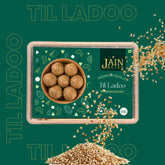Shvetambara vs. Digambara: One Faith, Two Perspectives
 Jainism, one of the most ancient religions in the world, emphasizes non-violence (Ahimsa), truth, and liberation of the soul (Moksha). Over time, due to various philosophical interpretations and practices, Jainism divided into two major sects: Shvetambara and Digambara. This division dates back to around the 3rd century BCE and continues to influence Jain traditions today.
Jainism, one of the most ancient religions in the world, emphasizes non-violence (Ahimsa), truth, and liberation of the soul (Moksha). Over time, due to various philosophical interpretations and practices, Jainism divided into two major sects: Shvetambara and Digambara. This division dates back to around the 3rd century BCE and continues to influence Jain traditions today.
Origin of the Division:
The division occurred due to differences in monastic discipline, lifestyle, and interpretation of scriptures after the Mahavira’s Nirvana (liberation). The two groups formed due to differing opinions on:
-
Monastic clothing
-
Possession of scriptures
-
Lifestyle practices
-
Status of women in spiritual practice
Shvetambara – The White-Clad Sect:
The word "Shvetambara" is derived from "Shveta" (white) and "Ambara" (clothing), " It refers to the monks and nuns who wear white robes as a mark of purity and simplicity.
Beliefs and Practices:
-
As a symbol of simplicity and non-attachment Monks and nuns wear white clothes
-
They believe that liberation (Moksha) is possible even for women.
-
Shvetambaras believe in preserving scriptures written after Mahavira.
-
They believe that Mahavira was married and lived a worldly life before renunciation.
-
Idol worship is common, and their temples have Tirthankara idols adorned with jewelry and clothes.
Digambara – The Sky-Clad Sect:
Digambara means “sky-clad”, indicating monks who practice complete renunciation, including clothing.
Beliefs and Practices:
-
Monks do not wear clothes, believing it to be a symbol of complete detachment.
-
They believe women cannot attain Moksha in the current birth and must be reborn as men to achieve liberation.
-
Digambaras maintain that Mahavira lived an austere life and did not marry.
-
Scriptures were lost over time, and they rely more on oral traditions and ancient texts like Shatkhandagam and Kasayapahud.
-
Their idols are plain, unclothed, and without ornaments.
Similarities Between Both Sects:
Despite their differences, both sects follow the same core teachings of Jainism:
-
Ahimsa (Non-violence)
-
Satya (Truth)
-
Aparigraha (Non-possessiveness)
-
Anekantavada (Multiplicity of viewpoints)
-
Moksha (Liberation from the cycle of birth and death)
FAQs on Jainism
1. Do Jains worship gods?
Jains do not worship a creator god. They worship Tirthankaras and liberated souls (Siddhas) as role models of spiritual achievement.
2. What are the main sects of Jainism?
Jainism is mainly divided into two sects:
-
Shvetambara (white-clad)
-
Digambara (sky-clad)
Both follow the same core philosophy but differ in practices and interpretations.
3. Why do Jain monks/nuns cover their mouth or go no clothes ?
-
Shvetambara monks cover their mouth with a cloth (muhpatti) to avoid harming tiny airborne life.
-
Digambara monks practice no clothing to signify complete detachment from material life.
4. What is the difference between Jainism and Hinduism?
Although both originated in India, Jainism is distinct with no belief in creator gods, strict non-violence, and unique spiritual practices and philosophies.

































